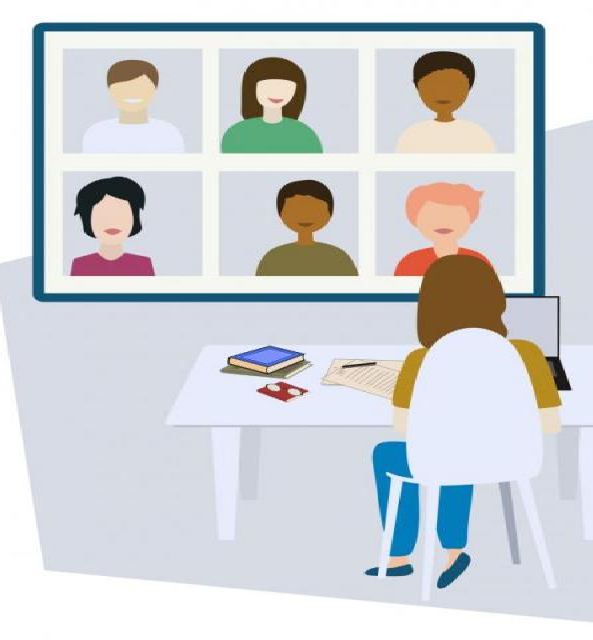Curated by the Knowledge Team of ICS Career GPS
Education

Learning during the Pandemic: 8 ways to improve online group work
Excerpts from article by Cathy N. Davidson and Christina Katopodis, published in INSIDE HIGHER ED
In a recent international survey of more than 3,000 undergraduates taking courses online during the COVID-19 pandemic, Vikki Katz, associate professor in the School of Communication and Information at Rutgers University, along with her team of collaborators, found that students were unhappy doing large-scale group projects.
Katz and her colleagues emphasise that collaborative projects are important. However, they advocate assigning short-term group projects, managing them with care and making them low stakes.
Since these days, students are dealing with such things as illness and even death, unreliable bandwidth, and inadequate work and study environments, it is unfair to burden them with interdependence.
They suggest that it is particularly difficult online to manage students who fall away, “ghost” the class for a period of time or fail to contribute, leaving their peers to shoulder the responsibilities for the group.
As difficult as it is, now is exactly the time to be helping students learn how to collaborate online. Ditching group projects now, as the world increasingly depends on them, does not prepare our students for life beyond college.
We need to show students why collaboration is important.
Key Recommendations for Course Collaborations
No. 1: Structure group projects around real-world problems
Ample educational technology research across many fields shows that students have more positive learning outcomes when they tackle meaningful projects with actual consequences. As Stanford University professor emerita Andrea Lunsford and her team of researchers have found, students’ writing improves when they write to communicate beyond the classroom and not simply to the professor for a grade.
No. 2: Create an equitable distribution of labour and assure students that you, not they, are responsible for this aspect
One key difference between student online collaborative projects and those in the workplace is accountability. In a class, too often the most dutiful students are so worried that an irresponsible classmate will bring down their grade that they often jump in and assume the supervisor role. That’s unfair to everyone in different ways.
Supplementing students’ group meetings with one-on-one meetings with you allows you to ask, “How is group work going? Have you heard from all your peers this week?” You can offer to nudge a missing student, for example, with an email.
No. 3: Create “pods” large enough to guard against ghosting
We suggest a minimum of three people per group — that way if one student doesn’t hold up their end, the rest of the group can continue moving forward.
No. 4: Get rid of competition for grades within the group
Assign each member of the project team a role, specific tasks and deadlines, and promise all the same final grade if they accomplish all they were assigned on deadline. Again, this mirrors contracts in the world beyond school.
No. 5: Assign pre-work
Increase student engagement by asking students to create their own job descriptions. We like to jump-start this by posting lists of jobs that might be pertinent to group work: e.g., project management, graphic designer, researcher, lead writer, copy editor, proofreader, web manager, community networker. We invite students to use these or add their own.
No. 6: Provide a clearly defined project timeline and checkpoints that help students move from one phase to the next
We suggest a number of intermediate deadlines, with clear deliverables for each group member at each milestone. Begin synchronous (in-class) group work with check-in time, where students share tasks completed and next steps. Encourage students to celebrate their successes and to help one another identify what needs to be done next.
No. 7: Be forgiving and adaptable
Both you and your students may need to revise the scope, the timeline and the responsibilities as the project unfolds. Build that flexibility in from the very beginning. In the world beyond college, not every contract is fulfilled, not every project is successful. Being able to survey a situation and adapt realistically to it is another important skill in college, work and life.
No. 8: Put that achievement on a résumé!
Once your class has completed this tremendous feat, show students how to put their accomplishment on a résumé. Literally. Have students search “workplace collaboration” online to see how many articles, books and management training opportunities exist for improving skills in this area.
Job recruiters insist the ability to work well with others is a key skill they seek in new hires. If students succeed in their online collaborative projects, help them describe that success. They have earned it — and so have you.
Career

Excerpts from an article by Tamanna S Mehdi, published in The New Indian Express
Game’s on! The rise of digital gaming
People of all ages are becoming avid gamers on their mobile phones, with e-sport games finding many takers. With entertainment and sports options outside of home closed for months, folks have taken to e-sports. This has made a career in e-sports a lucrative one in India.
Based on a survey by BARC and Nielsen, the number of smartphone game users grew from 53 per cent per week to 68 per cent, a rise by 15 per cent from pre-lockdown times. The time spent on mobile games went up from 151 minutes to 218 minutes, a rise by 44 per cent per user per week during the lockdown.
Future of digital gaming
Digital gaming has been emerging steadily as one of the favourite pastimes in the world even before the pandemic and the lockdowns, but as soon as live entertainment came to a halt, the virtual kind just took off. It is providing a digital 3D environment in which people can develop content, interact, and pass on knowledge in innovative ways.
Mobile gaming is now catching on in the huge semi-urban and rural markets. Ludo, carom, Table Tennis, cricket, football are popular e-sports. PUBG Mobile, Call of Duty, Fortnite, Fifa 19, etc started the trend in the last few years.
Many IPL fans have made their fantasy Dream Teams on the Dream11 app. The rise is evident as platforms such as Gamerji, The ESports Club (TEC), Indian Gaming League (IGL), Hitwicket, etc are creating their footprints globally.
While globally, gaming and e-sports revenue overshadow that of traditional industries such as film and music, it is surely getting there with one of the largest mobile audiences in the world consuming gaming content on a daily basis.
Local connect
Developers are leaving no stone unturned, going all out to capture a wide desi market. Hitwicket is introducing ‘Ra 1’ as a new skin for its in-game characters, based on the character from the Ramayana. “Marrying this cultural element to the vehicle of mobile gaming, we seek not only to add greater value to our users’ experience, but to represent the richness and diversity of Indian mythology and folklore,” says Kashyap Reddy, co-founder, Hitwicket.
Amit Purohit is the founder of Fantasy Akhada, a fantasy sports platform covering cricket and football. He comments, “We aim to acquire users intelligently at an optimum cost and then delight them with personalised, dedicated, 24*7 customer care desk. Also, apart from the core DFS gaming option, we have predictions and match club which help us cover an entire range of sports fans.”
Trends that will shape the gaming industry
- Mobile First: The accessibility of mobile is undeniable. The localisation and ease of access of mobile games makes it the driving force behind the growth of gaming in India.
- Livestreams: Watching gaming for entertainment has been growing.
- Sports to e-sports: Professional sports leagues turned to e-sports to engage with their audiences before sports resumed.
(Disclaimer: The opinions expressed in the article mentioned above are those of the author(s). They do not purport to reflect the opinions or views of ICS Career GPS or its staff.)
Like this post? For more such helpful articles, click on the button below and subscribe FREE to our blog.




